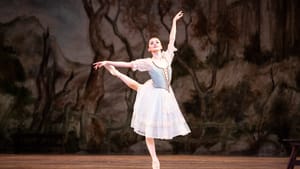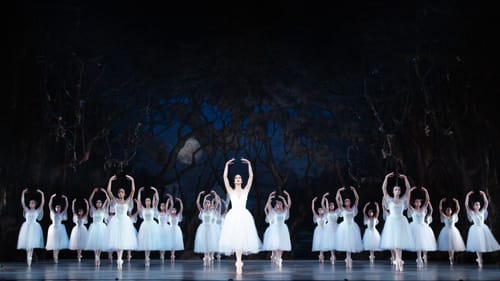Stay in the Loop
BSR publishes on a weekly schedule, with an email newsletter every Wednesday and Thursday morning. There’s no paywall, and subscribing is always free.
A guilty passion
The Pennsylvania Ballet presents ‘Giselle’

I always approach full-length story ballets of the 19th century with a mix of glee and trepidation—and so I entered the current run of Giselle at the Pennsylvania Ballet. Created for a wealthy audience, such ballets come with beautiful music, elegant choreography, and evocative scenery and costumes. Dancing peasants, too: In the first half of the 19th century, audiences romanticized country life and craved sophisticated entertainments based on folktales.
Then there are the dead girls, the source of my trepidation. Giselle, a young and innocent peasant girl with a heart condition, rejects a local suitor for a prince in disguise and suffers the consequences of his walk on the countryside. But I have to admit that I love act 2 of Giselle with a guilty, but soaring, passion.
Innocence and madness
Giselle’s two acts are almost different ballets. Adolphe Adams’s score cues the light and airy sweetness of the first act’s pastoral tale of love. The corps in peasant colors—browns and greens—serve as onstage village to observe the rise and fall of the ill-fated love story. Nayara Lopes and Albert Gordon’s peasant dance is a bravura grand pas de deux that nevertheless seems to exist solely to give the principal a rest.
Ultimately, Giselle is a star vehicle and Oksana Maslova shines in the part. In blue over white, she shows off her technique to perfection. Her intricate footwork bubbles over with innocent joy and, in one lovely pas de deux, she and Arian Molina Soca, as Albrecht, leap onto the stage in a jeté so perfectly synchronized that we need nothing else to tell us Giselle is in love. Her madness/death scene mournfully repeats an earlier lively dance with Albrecht, when he seduces her with a daisy. Foreshadowing act 2 in her madness, Giselle sees only the memory of Albrecht, and dances alone while the character’s love theme reminds the audience of better days—like yesterday. Like any tragic romance, love and betrayal are on a short calendar.
Angry dead girls
By the end of act 1, the audience around me had grown a bit restive. The program book takes a good shot at selling Giselle as a feisty heroine, but neither the music nor the choreography supports that interpretation (mad scene, anyone?). If act 2 were more of the same, Giselle would have long ago faded in memory, one of those sweetly archaic pieces dusted off once in a while to remind us why we don’t see it more often. Fortunately for audiences, act 2 is a tour de force of remorse, vengeance, and redemption, with one of the most iconic ballet blanc scenes in the repertoire. The Wilis, spirits of girls who died of heartbreak, have arrived in their long, white, romantic tutus, and they are looking for vengeance.

The ballet blanc belongs to the corps. I am afraid I bounced in my seat a little like a four-year-old when they performed their iconic hops across the stage. Two groups of dancers faced each other, chugging along in arabesque, heads down, hop, hop, hop, in perfect unison, crossing their lines in a blur of white tulle. To show they meant business, they circle Giselle’s poor rejected suitor, Ian Hussey’s Hilarion, and forced him to dance to his death. That always seemed unfair to me—he had broken no hearts—but the Wilis weren’t checking resumes.
As Myrtha, queen of the Wilis, Dayesi Torriente gave the most powerful performance in the ballet. Her dancing, of course, was gorgeous, but I was most impressed by her presence. As she stood in judgment (and en pointe) she seemed the very embodiment of baleful vengeance: beautiful and terrifying in her stillness.
Grown-up tragedy
Act 2 gives us a coda to the tale, a warning that is actually worth pondering. The Wilis have given into their vengeance; they are trapped at the crossroads, doomed to repeat their revenge soullessly and forever. Newly joining them, Giselle has a choice: dance the lover who betrayed her to his death or defend him from the Wilis. Albrecht makes the decision easier because he dances true remorse, reaching for her ghostly form as they slide past each other. Much as the worlds of the mad and the sane before it, the worlds of the living and the dead do not quite touch. When they do meet, the angel lifts, high over Molina Soca’s head, seem effortless, as if he is indeed lifting a spirit who is now beyond his reach. One might swoon, were one so inclined.
The ballet has a surprisingly wise ending for such an unprepossessing beginning. Revenge has no winners and Giselle cannot move on until she forgives. In act 2, both characters finally grow up. The tragedy is that they do it too late.
What, When, Where
Giselle. Choreography by Jean Coralli and Jules Perrot (interpreted by Angel Corella). Costumes and scenery courtesy of the Louisville Ballet. Through March 18, 2019, at the Academy of Music, 240 S. Broad Street, Philadelphia. (215) 893-1999 or paballet.org.
The Academy of Music is wheelchair-accessible. Wheelchair-accessible seats or upholstered, loose chairs are available for purchase online, by calling Patron Services at (215) 893-1999/(215) 893-1999 TTY, or by emailing [email protected].
Sign up for our newsletter
All of the week's new articles, all in one place. Sign up for the free weekly BSR newsletters, and don't miss a conversation.
 Camille Bacon-Smith
Camille Bacon-Smith